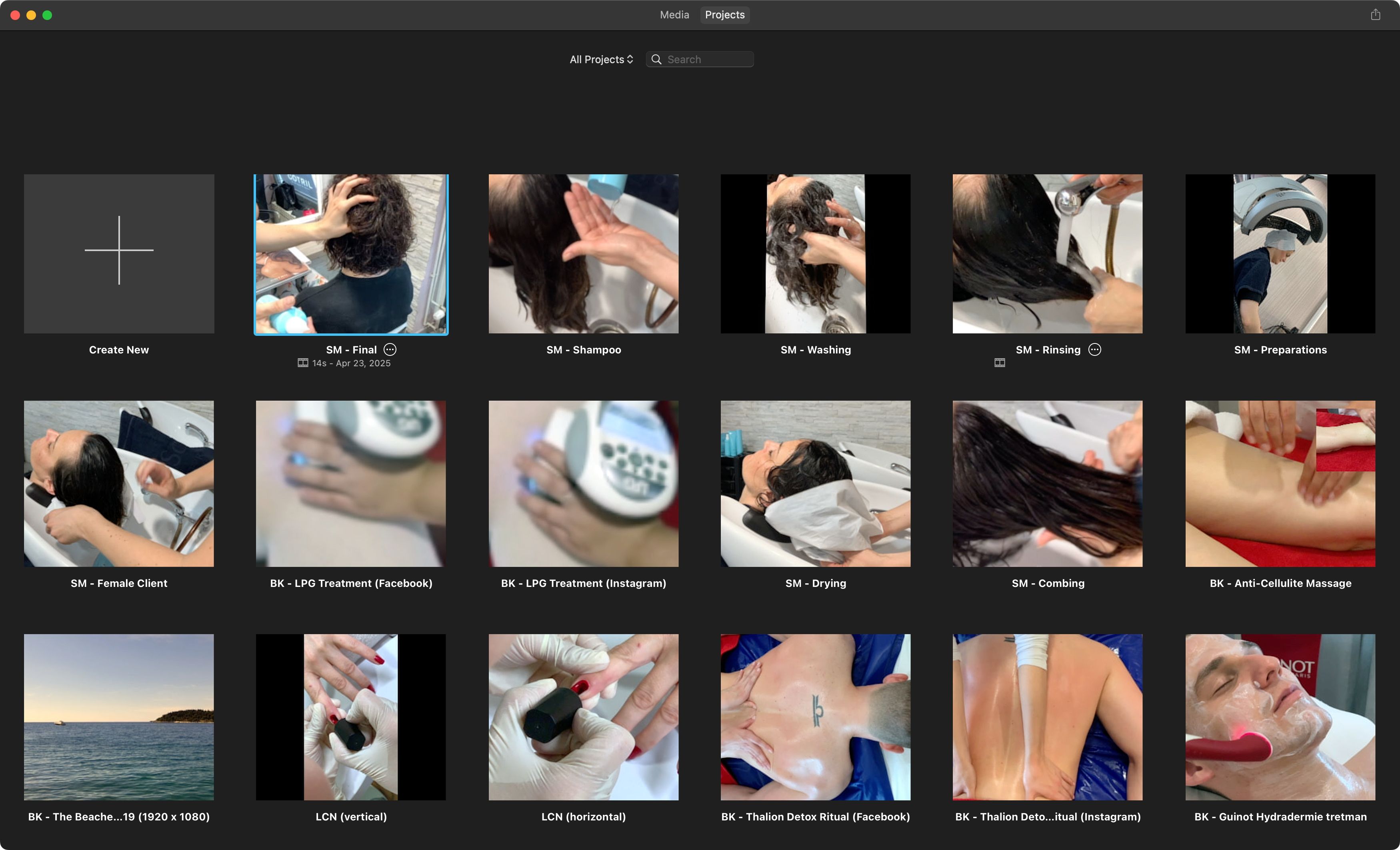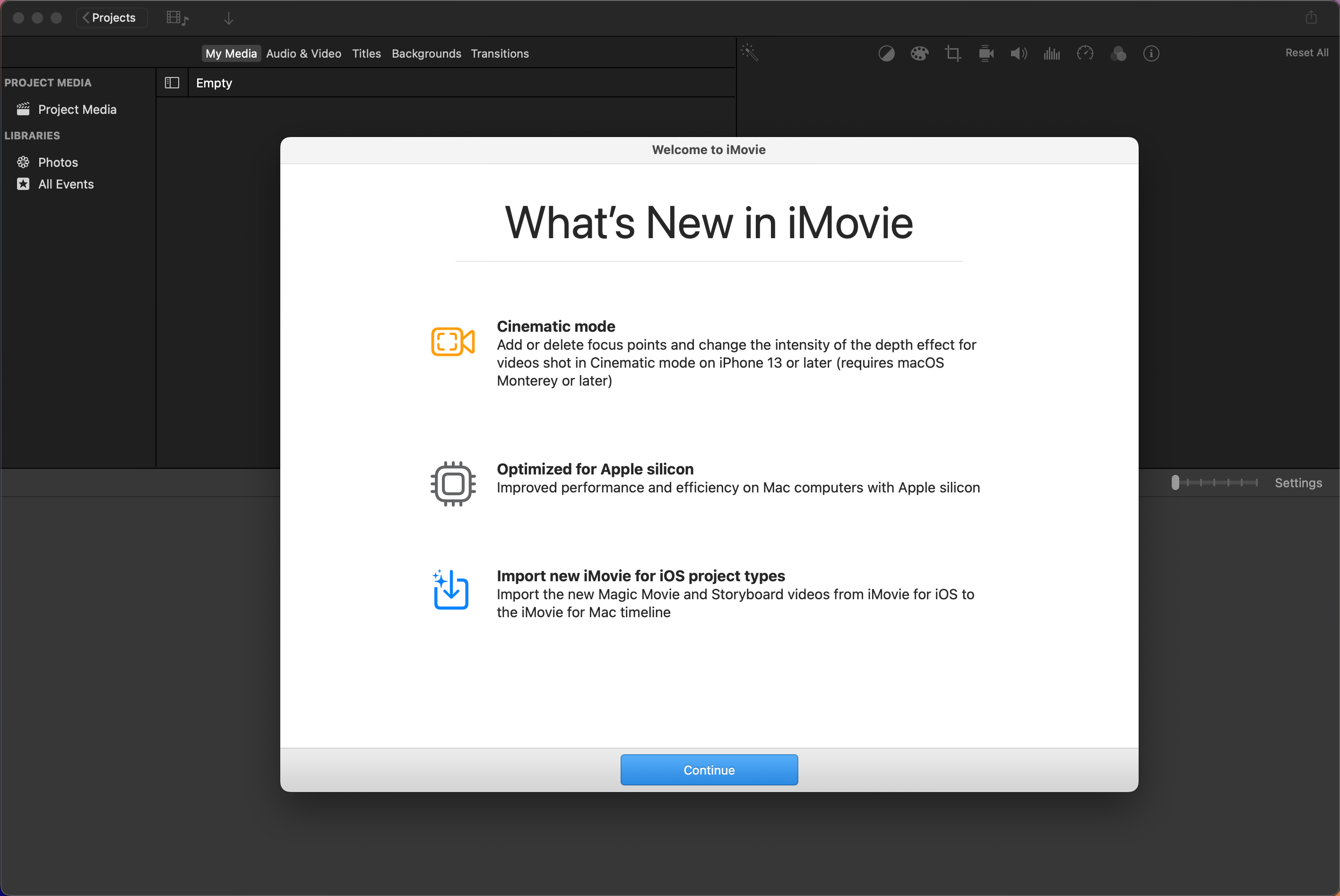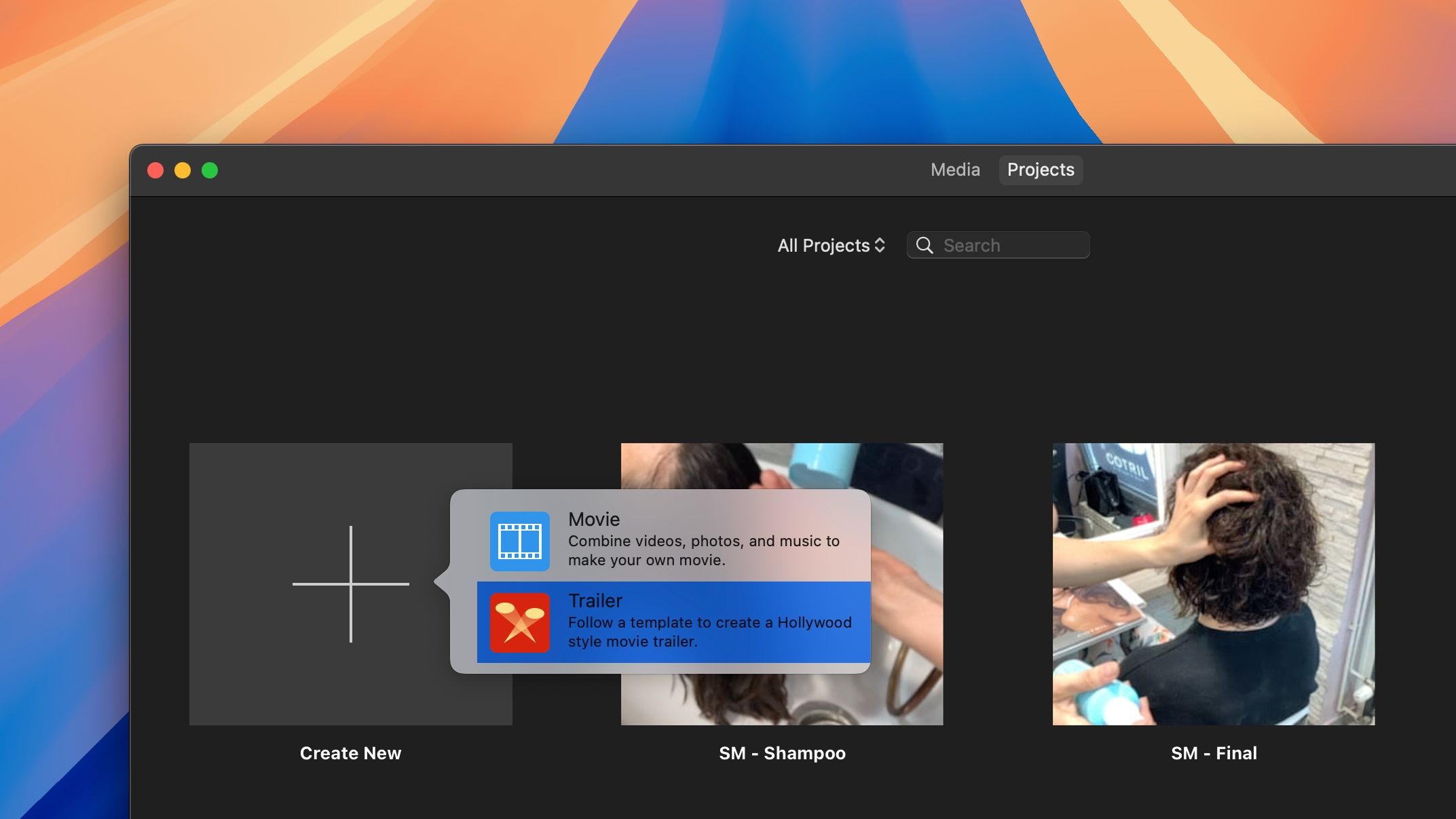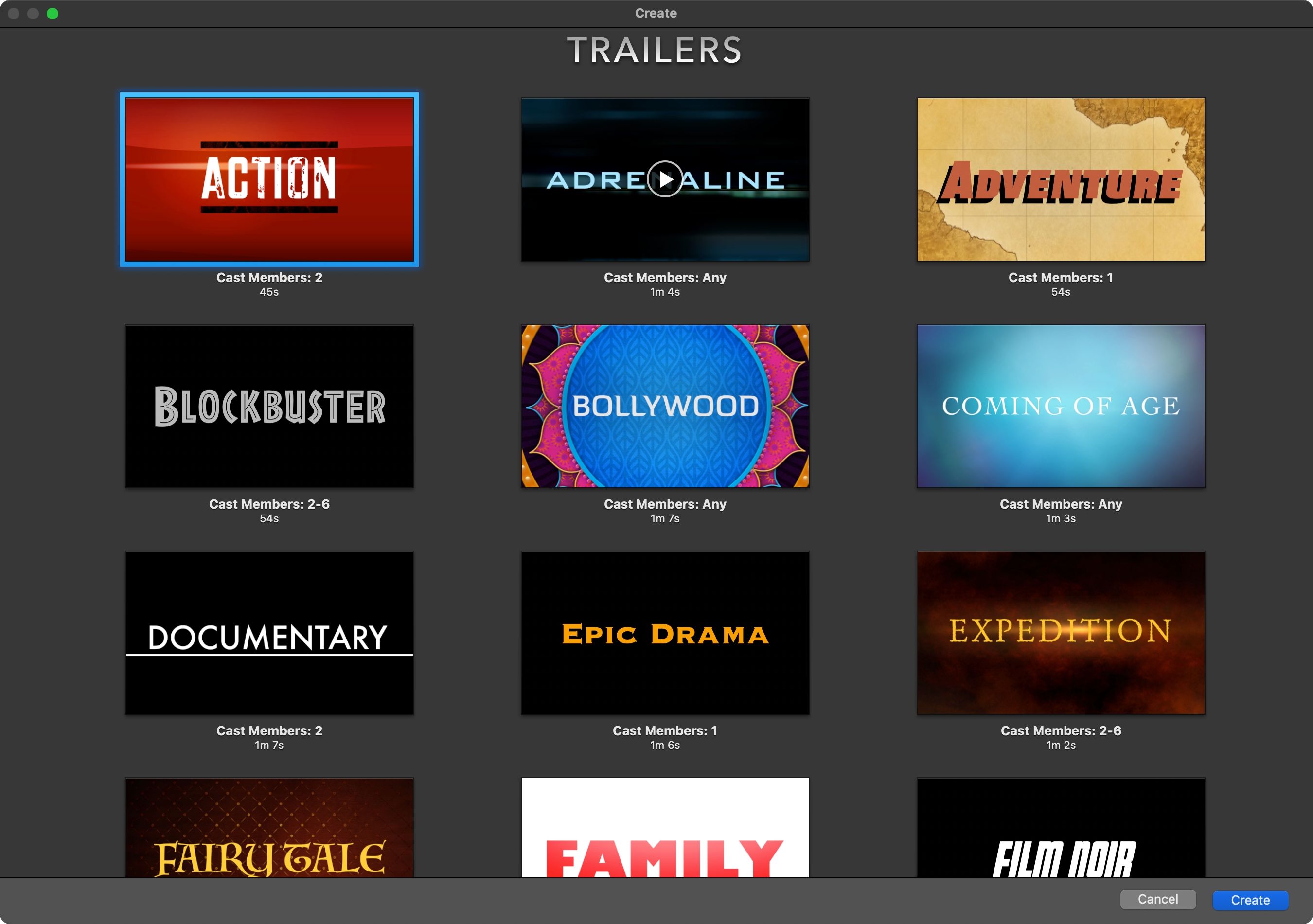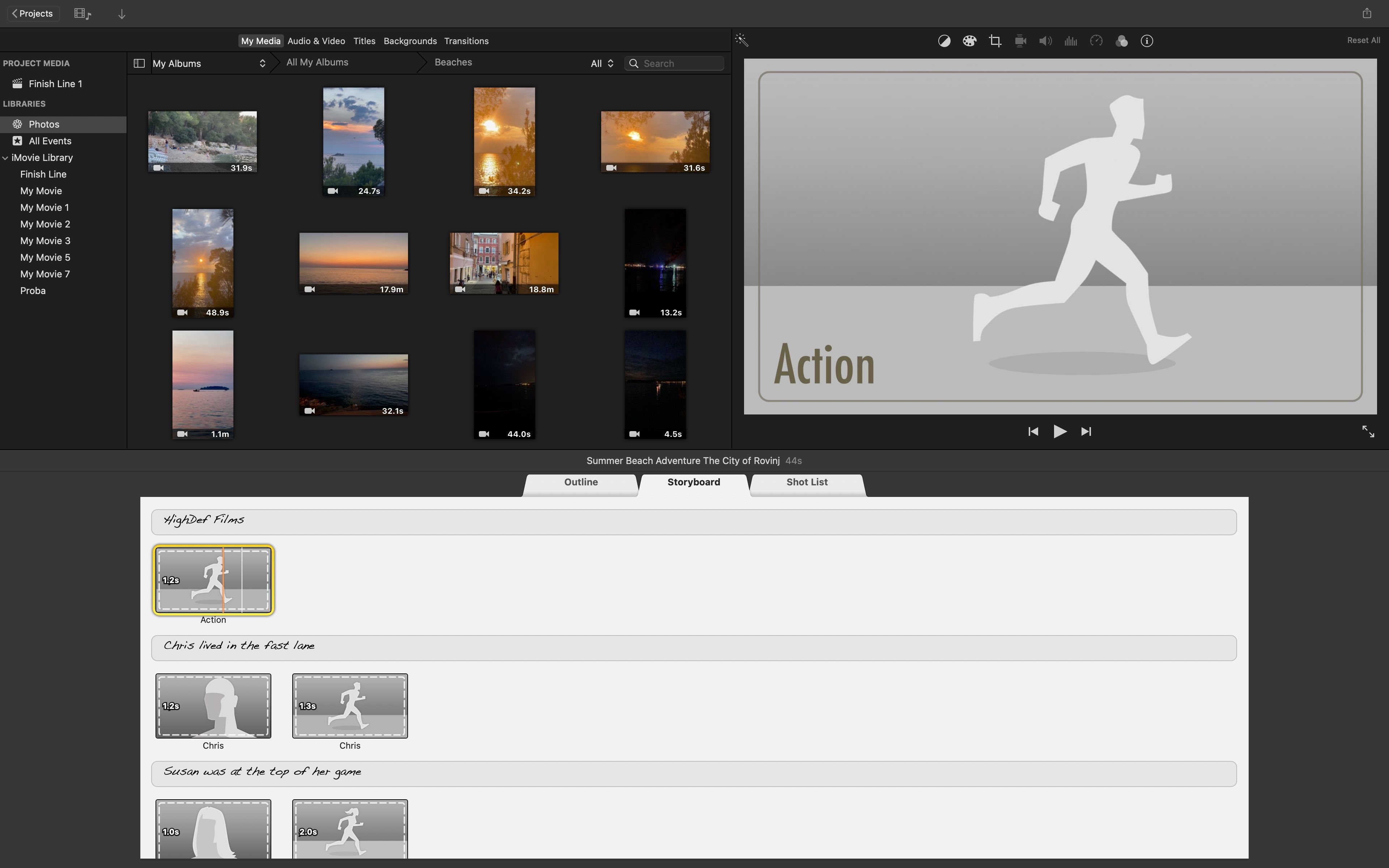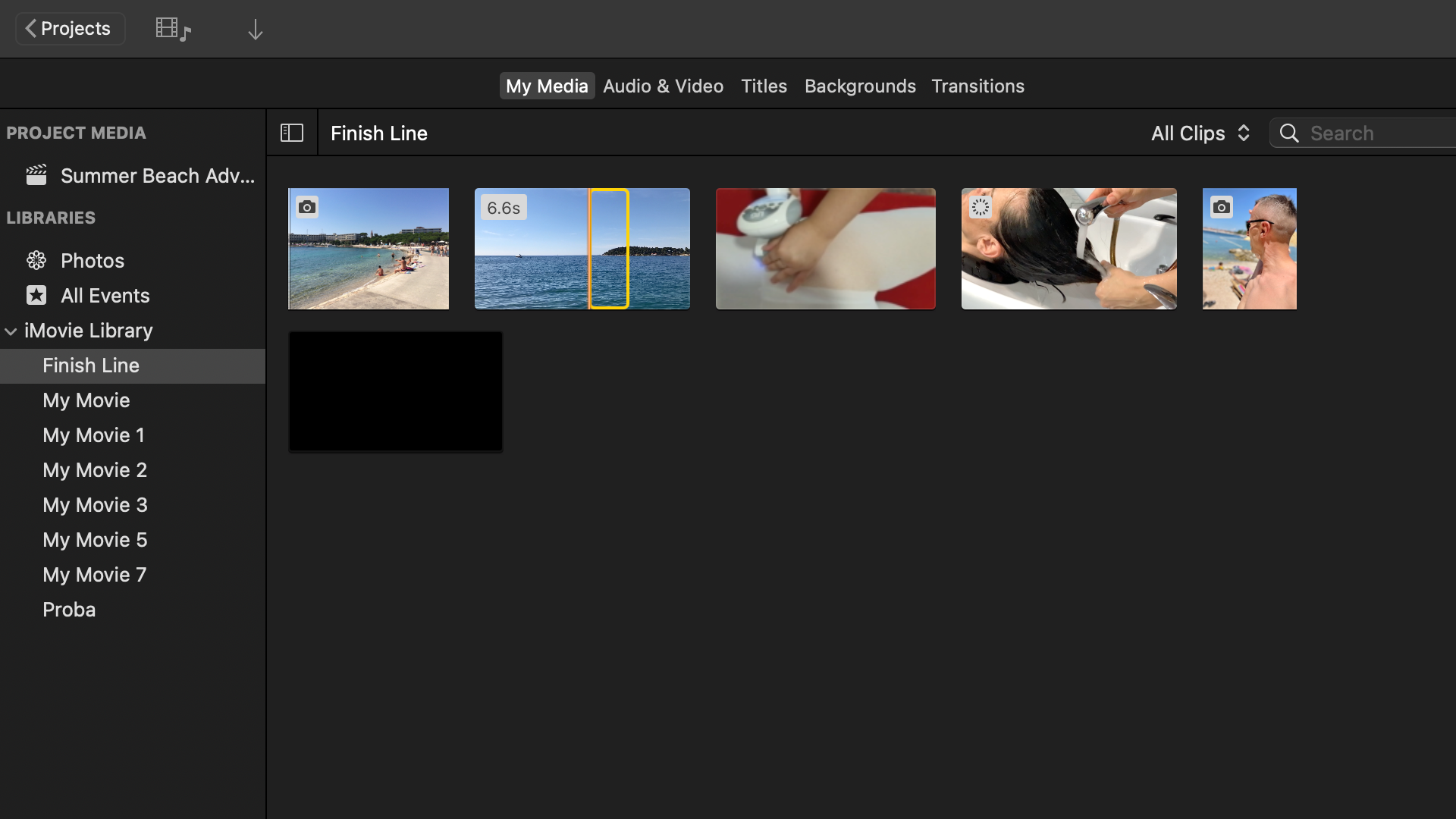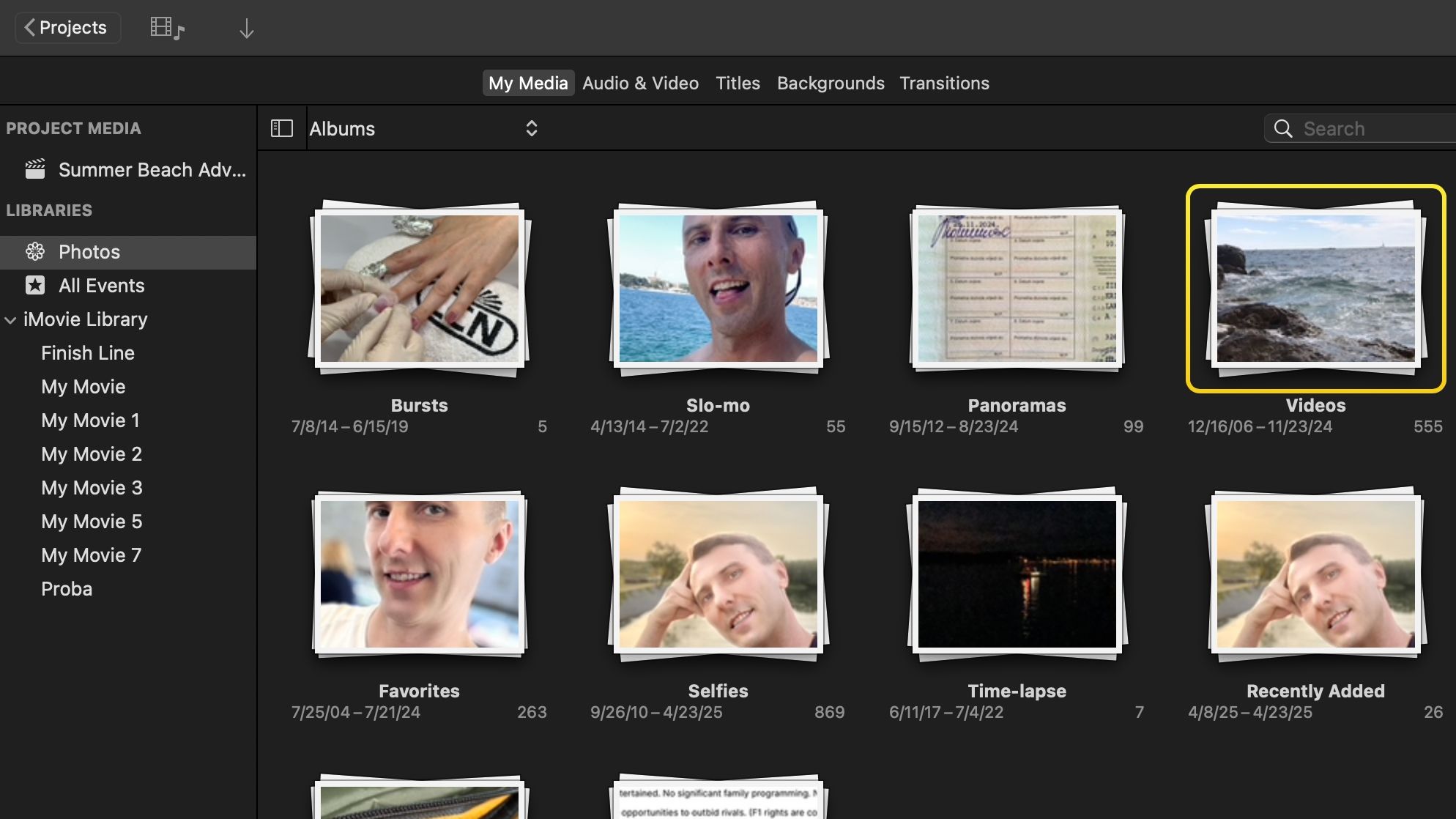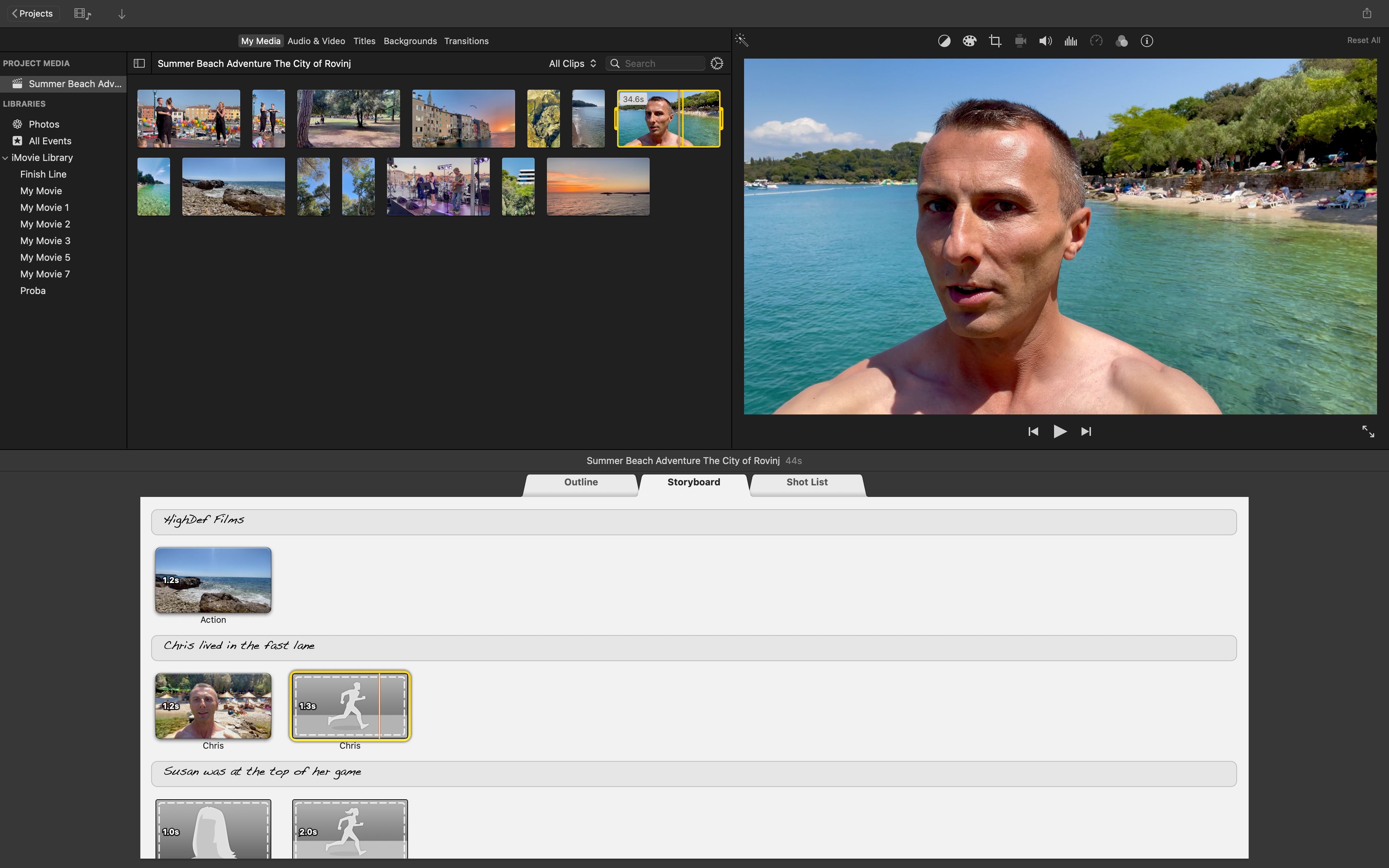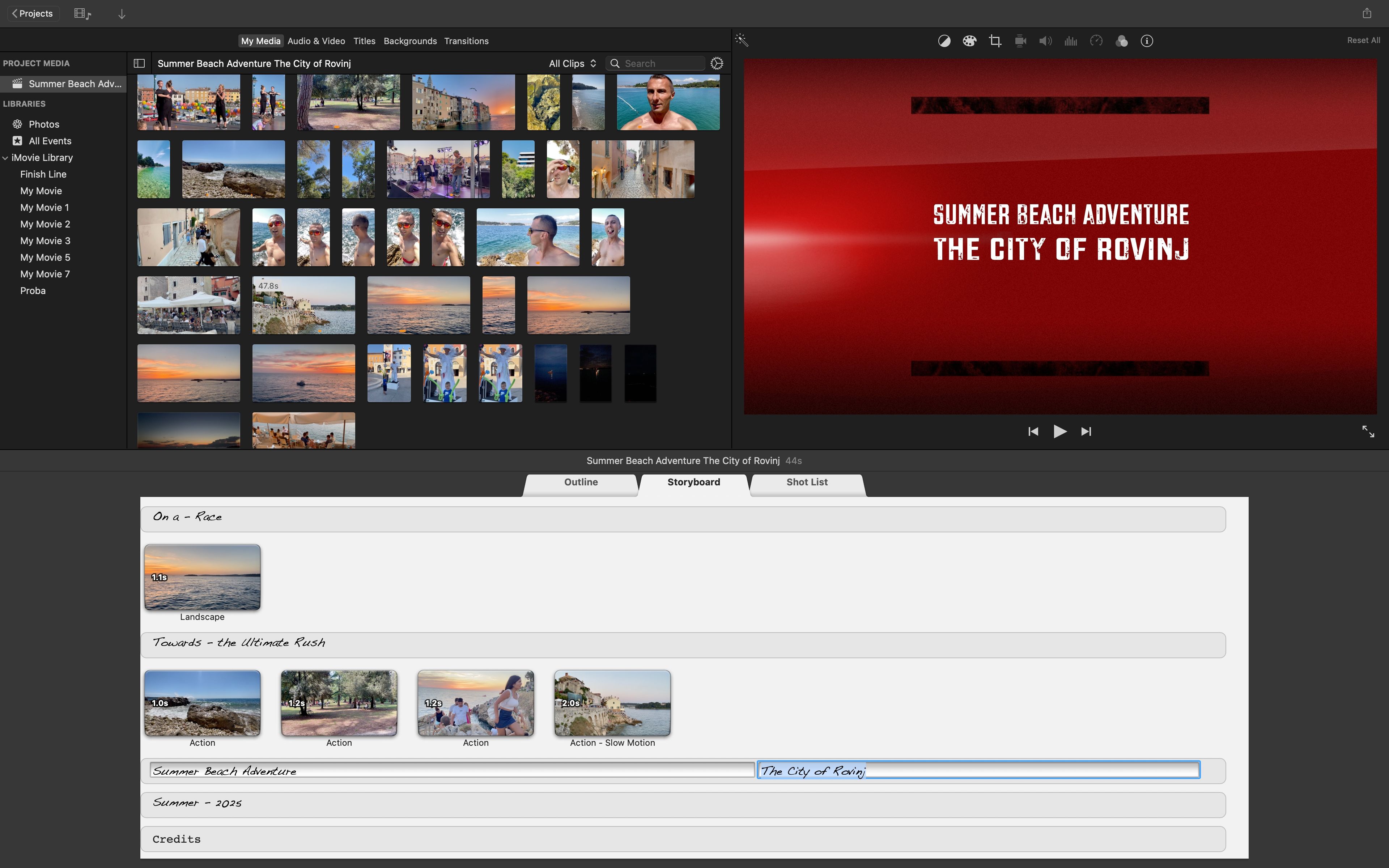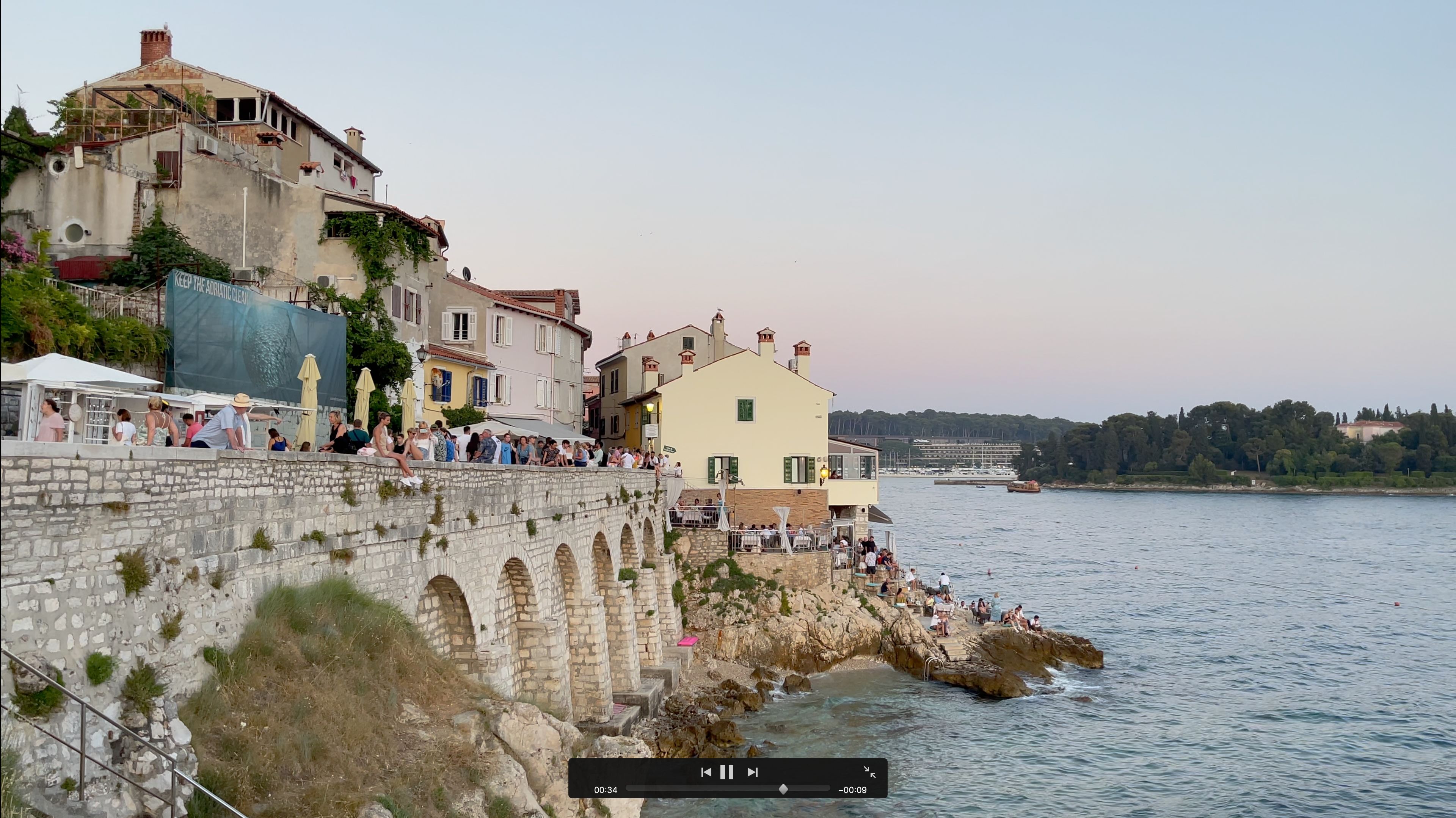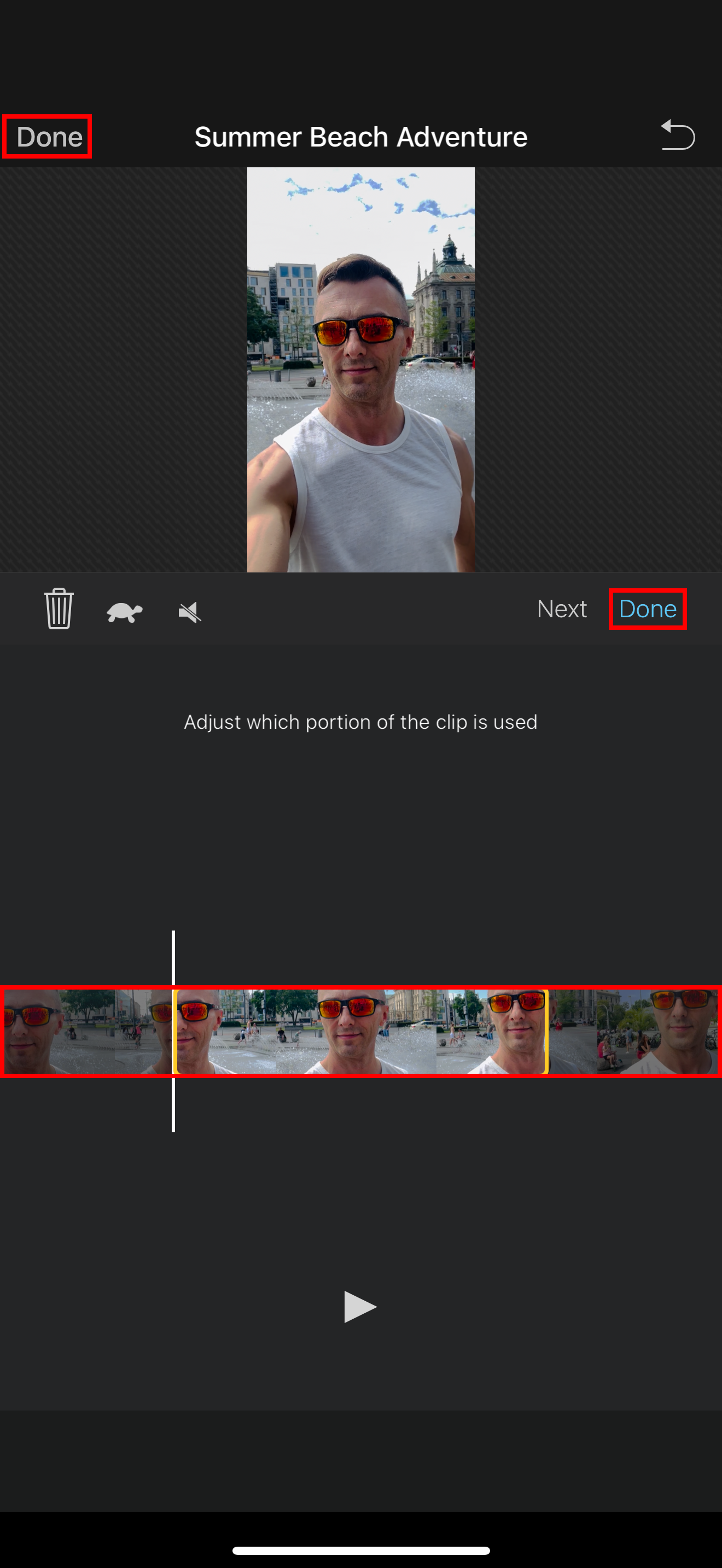Quick Links
Summary
- iMovie is available for free on Apple devices, providing a user-friendly video editing experience.
- The video editor allows anyone to easily create professional-looking video trailers using preset templates.
- You can make changes to your trailer, feed iMovie some clips, and preview as you go to create flashy-looking short videos in next to no time.
No wonder shortform video took social media by storm; with AI-powered apps like CapCut and Edits by Instagram, total noobs can create attractive video montages that condense space, time, and information like MTV’s unforgettable jingles back in the 1990s.
Nowadays, anyone with a smartphone camera calls themselves a video editor—and there’s nothing wrong with that. But before TikTok, before Instagram stories, and even before social media, Apple’s excellent iMovie software truly democratized video editing.
Is iMovie Still a Thing?
I’m a big believer in iMovie. A few years back when I used to handle social media presence for my neighborhood’s hair and beauty salons, iMovie proved a huge productivity lifesaver.
Apple created iMovie back in 1999 for Mac OS 8, bundling it later with the now-discontinued iLife suite of multimedia applications. Right from its inception, iMovie allowed Mac owners with no videography skills or prior video editing experience to breathe life into their vacation videos with compelling transitions, sound effects, and music.
iMovie is now a standalone app preinstalled on every iPhone, iPad, and Mac. If you’ve deleted it from your device, you can download iMovie for macOS and iMovie for iOS and iPadOS for free from the App Store.
iMovie later expanded to iOS and iPadOS and gained the ability to import projects from the iPhone and iPad versions of the app to iMovie for Mac. While you could argue that iMovie desperately needs a modern overhaul as it hasn’t received a major update since 2013, one thing continues to hold: iMovie is still the perfect video editor for almost everyone.
If you grew up in the social media age, you might argue, rightfully so, that many iMovie features are commonly found in modern video editors. If I had to single out one iMovie feature that sticks out for me, it would be its uber-cool trailer generator which makes it a cinch to create eye-popping video reels with very little effort.
Creating a Movie Trailer in iMovie for Mac
Creating an eye-catching trailer is an art in and of itself. There’s a whole cottage industry around companies specializing in creating breathtaking movie trailers. A movie trailer done right can often be more compelling than the actual flick. With iMovie, you can create gorgeous Hollywood-style trailers that look as if created by professionals in just a few easy steps.
Choosing a Template
The magic starts with picking a template, then you’ll adjust settings like the studio name and credits for more fun, add your clips and some images like close-ups to your storyboard and shot list. The process is highly visual and anyone can do it!
Launch iMovie on your Mac and select “Project” at the top, then hit the “Create New” tile and choose “Trailer.”
You’ll be presented with visually appealing templates, ranging from “Action” to “Adventure” to “Blockbuster” and beyond, each optimized for specific storytelling and with a matching musical score. Select one that best suits your videos and click the “Create” button.
You’ll notice that each thumbnail shows the number of cast members required for the trailer, along with its length. To see any trailer in action before opening a template, hover over its thumbnail and click the play button that appears.
Adding Trailer Credits, Cast Members, and Other Information
Select the “Outline” pane to add credits and cast members, customize the studio name, and so on. Changing these settings can make your video much more interesting. For vacation videos, for example, you could set the studio name to your family name, make yourself the director, and set cast members to the names of the people who appear in your clips.
Click any placeholder text, type what you want, and hit the Return key. Don’t leave any fields blank or iMovie won’t be able to construct the trailer. Here’s everything you can adjust:
- Name and Date: Change the trailer title, movie release date, and other information to match the theme of the clips you’ll use for the trailer. For example, you may want to set the trailer name to “Adventures in Hawaii” and set the date to “May 2025.”
- Cast: Name the people in your clips here and they’ll be listed as cast members in the trailer’s credits section.
- Gender: Choose the correct gender for each cast member.
- Studio: Create an imaginary studio name, like “Continental Studios” or “The Johnsons Films”. Click the “Logo Type” menu to change the studio logo, ranging from classic choices like “Spinning Earth in Space” or “Snowy Mountain Peak” to the more contemporary ones such as “Street Lamp” or “Galaxy.” You’ll instantly see a preview.
The placeholder text and customizable elements you see here vary by template.
Next, select the “Storyboard” pane. Here, we’ll sketch out the storyboard by feeding iMovie some clips to work with and providing captions. The placeholder images indicate the type of scene based on the chosen template, showing what clip to add, such as action, closeup, or running. The timestamp on the left side indicates the required clip length.
Click the “My Media” tab in the browser in the top half of the interface and select “iMovie Library” below “Libraries” on the left to access the videos already imported into iMovie.
To use your shot-on-iPhone videos instead, select “Photos,” choose “Albums” in the menu, and double-click “Videos” to show all your footage from the built-in Photos app.
Now we’ll add our footage. Select a placeholder image so that it has a yellow outline, then click or drag the clip in the media browser to add it to the placeholder from the point where you clicked.
You can also drag the yellow handles on each side of the clip in the built-in media browser to select a custom range. Then, click the clip to add it to the selected placeholder starting from the first frame of the selected range.
To add an image instead of a clip, select a Photos album in the menu at the top of the window and drag the image to a placeholder. iMovie will intelligently animate the image using automatic panning, zooming, cropping, and the Ken Burns effect.
Fine-Tune the Trailer in the Shot List
As the last step, we’ll review our trailer structure and media using the shot list. Select the “Shot List” pane for an overview of all the media used in your trailer. Here, you can easily spot and correct any mistakes, such as using a clip in a placeholder meant for a cast member.
Play Your Trailer
To play the trailer, hit the play icon in the video preview in the top-right corner or press the Space key. To take the preview full screen, click the icon in the bottom-left corner of the video preview or press Shift+Command+F on the keyboard. Your trailer will play in fullscreen and display the media controls, with the rightmost icon taking you out of fullscreen mode.
Creating Trailers in iMovie for iPhone and iPad
Creating trailers from your personal videos is a bit different in the iPhone and iPad versions of iMovie because you must pick the Storyboard option first, which has a trailer maker.
Select a Trailer Template
Open iMovie on your iPhone or iPad, and you should land on the “Projects” screen. Choose the “Storyboard” option in the “Start New Project” panel at the bottom, then scroll down to the bottom and choose “Trailers.” You should now see a template picker, offering the same templates as the Mac edition of iMovie. Select a template you fancy and hit the play icon right below the template preview at the top to see it in action. If you like what you’re seeing, hit “Create” in the top-right corner to generate a new trailer using the selected template.
Adjust Trailer Options in the Outline Section
Select the “Outline” tab to adjust information that will appear in the final trailer, such as cast members, credits, and titles. The steps are the same as in iMovie for Mac: you can give your movie a name, change the studio logo, name a director, define cast members that will be listed in the credits, etc. Once everything looks the way you want, you only need to add your media and some titles, and you’re good to go.
To customize titles, click any blue bar and type in your own title. The title will appear in your trailer as a text clip. You can move between titles by hitting the left and right arrow keys above the keyboard. Once satisfied with the changes, press the “Done” key.
Adjust Trailer Options in the Outline Section
Select the “Storyboard” tab to get started. Touch an empty placeholder to add a video. The placeholder image and label suggest the clip type the template requires, such as a wide shot or a group clip. Select “Video” at the top of the interface, then pick a clip in the media browser below the viewer. You can drag the yellow selection outline left or right to adjust a desired part of the video. Alternatively, record a new video directly into a placeholder.
To preview the clip to decide which part to use, swipe left and right over it.
If you add a clip to a placeholder labeled “Photo”, iMovie will add a single frame of the video. To adjust the insertion point after the fact, touch a video thumbnail, drag the vertical line to select a different frame, and hit “Done” to save the changes.
To add an image instead, tap a placeholder image in the Storyboard section, select “Photos” at the top, pick an image from your Photos library, and hit “Done” in the top-right corner.
To adjust the image, tap its thumbnail in your storyboard and drag it around or pinch with your fingers to adjust cropping or zoom. You can also turn on the Ken Burns Effect and change its start and end zoom for that classic Hollywood look and feel.
Preview the Trailer as You’re Building It
You can play the trailer as you’re adding your media; hit the play icon in the bottom-right corner of the video preview. To go fullscreen, hit the play icon on the left.
To exit the fullscreen player, hit “Done” in the top-left corner.
iMovie is unfairly overlooked in the avalanche of AI-powered video editors even though it has a lot more things going for it than critics give it credit for. iMovie “just works,” and it’s already preinstalled on the iPhone, iPad, or Mac you own!
So, fire it up, explore the beautiful project templates, and see for yourself how easy it is to create a professional-looking video trailer or reel with video chops required. I guarantee you’ll fall in love with video editing again.


